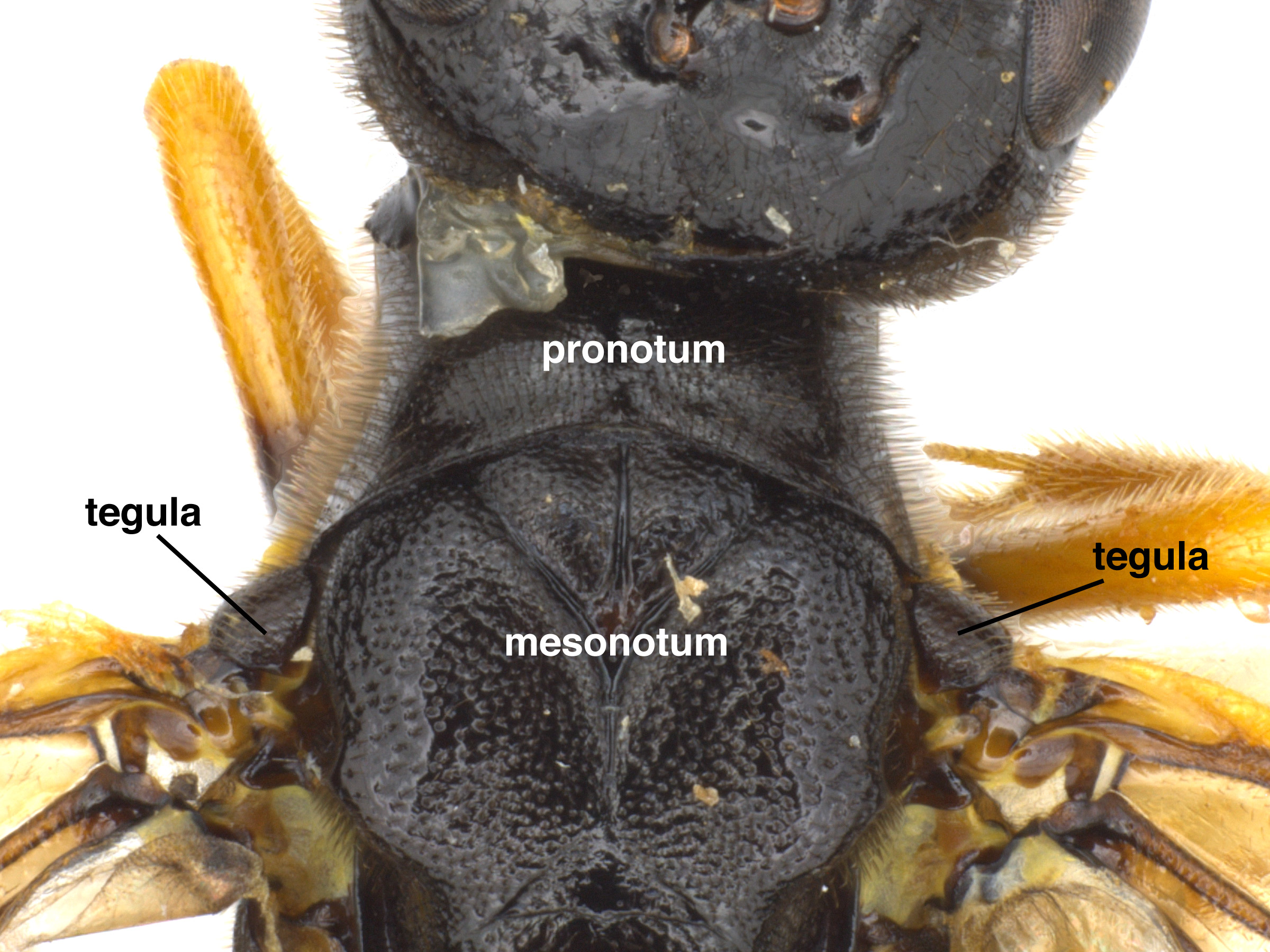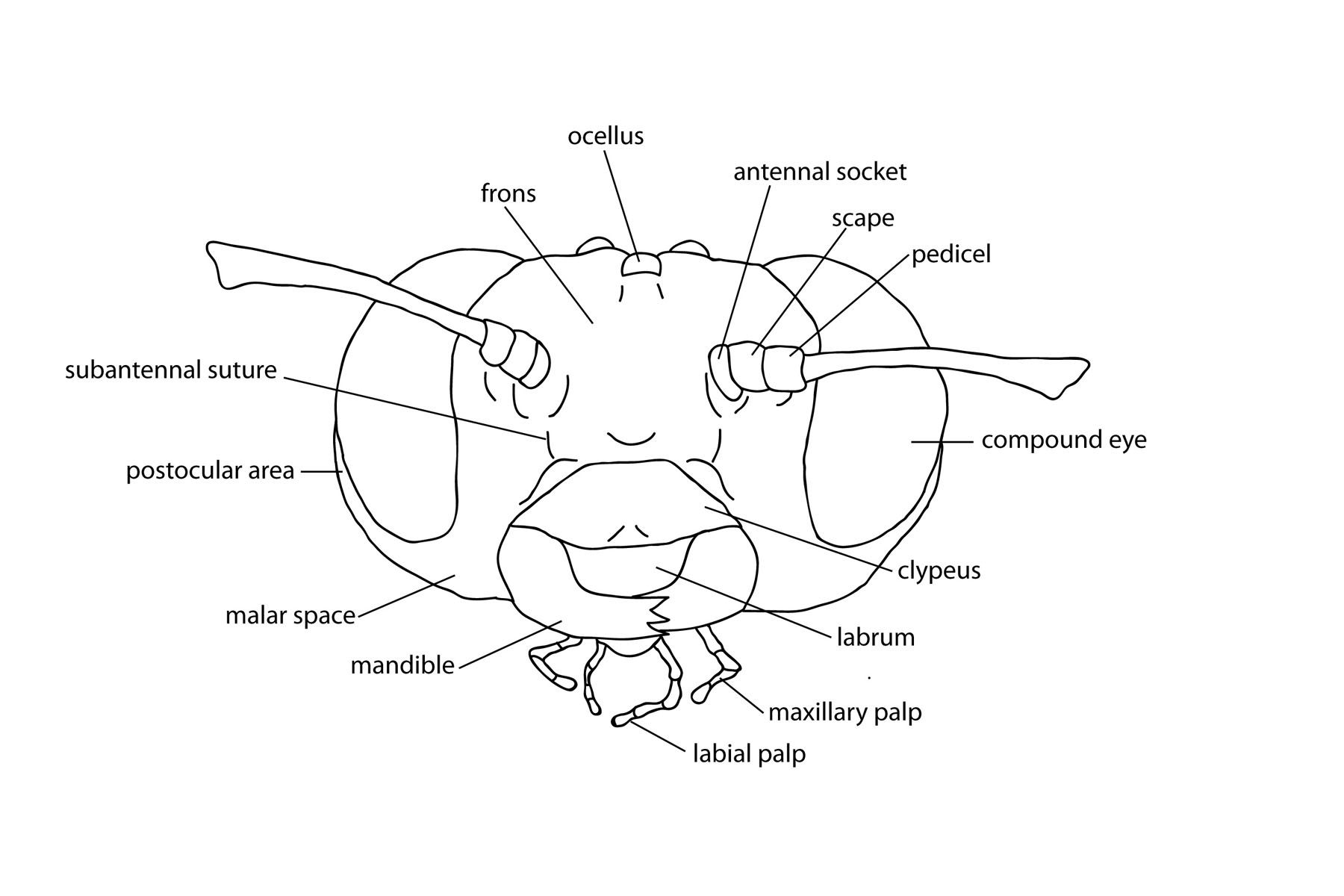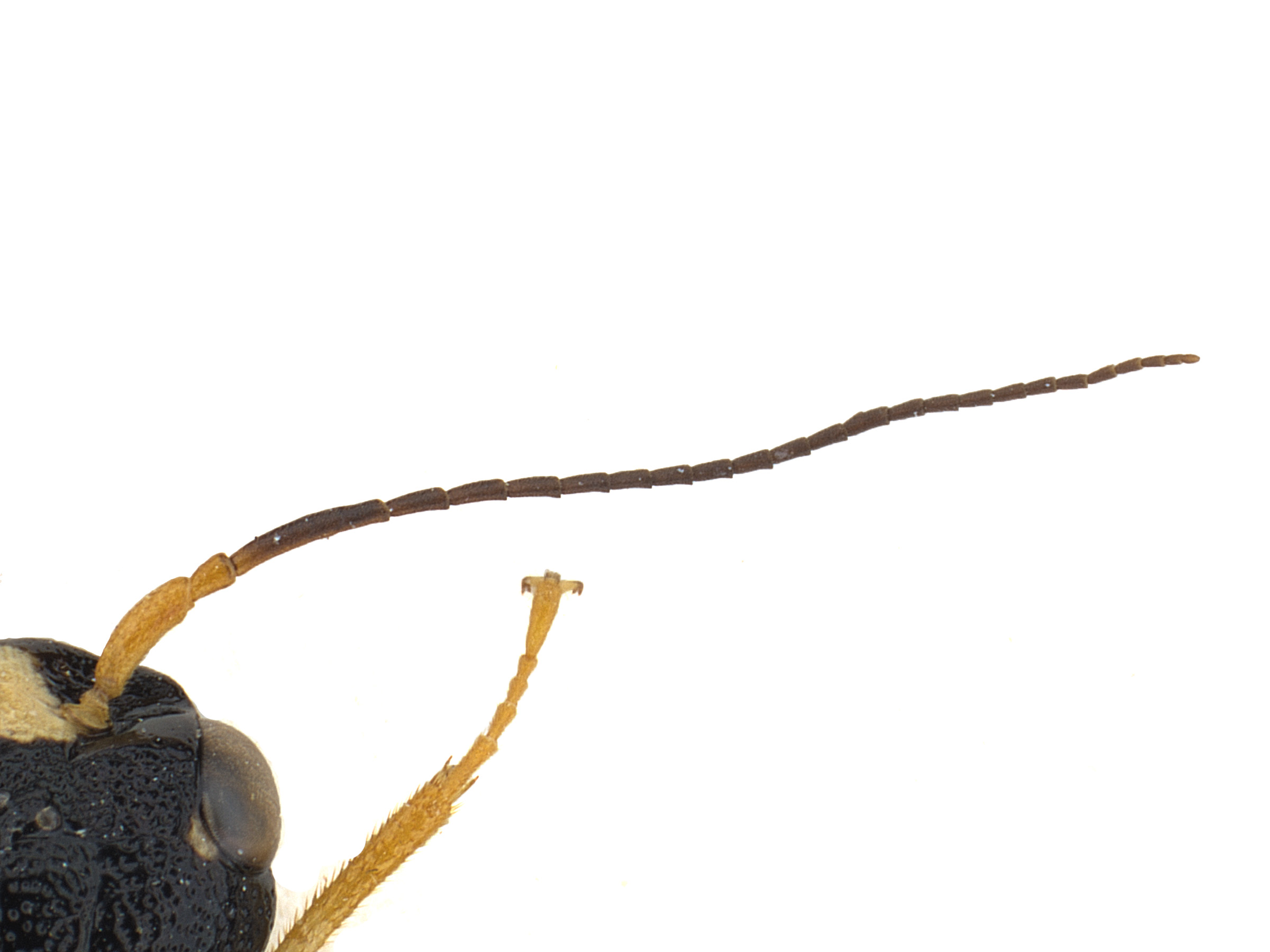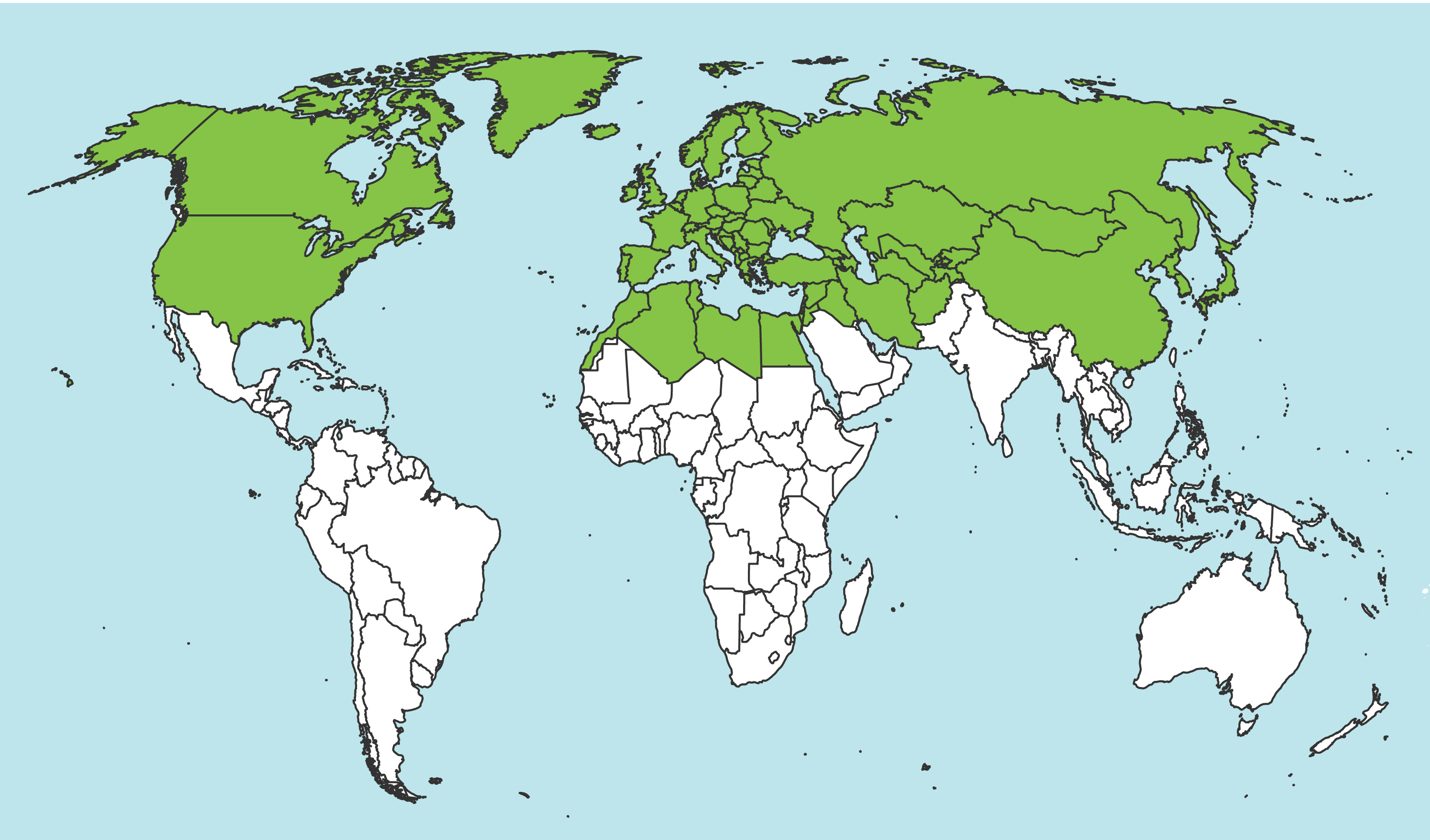Family: Xiphydriidae
Family common name: xiphydriid woodwasps
Subfamily: Xiphydriinae
Genus: Xiphydria Latreille, 1803
Subgenera: none
Xiphydriidae is a small but widespread family. Though sawflies are generally considered plant pests, xiphydriids feed only on already dead or dying wood. Species in the genus can become secondary pests of raw woodworking materials, but usually are of little economic importance. They are often found by humans in firewood (Smith 1976cSmith 1976c:
Smith DR. 1976c. The xiphydriid woodwasps of North America (Hymenoptera: Xiphydriidae). Transactions of the American Entomological Society 102: 101-131.).
Xiphydria is the only North American genus of the family. They are slender and wasp-like with distinctive spherical heads and relatively small eyes. LarvaeLarva:
the immature stage of holometabolous insects
 feed on wood of deciduousdeciduous:
feed on wood of deciduousdeciduous:
describing a tree that drops its foliage once a year and then re-grows it; often senescence occurs before winter and re-growth occurs in the spring
trees (Smith 1976cSmith 1976c:
Smith DR. 1976c. The xiphydriid woodwasps of North America (Hymenoptera: Xiphydriidae). Transactions of the American Entomological Society 102: 101-131.).
There are 35 described species worldwide restricted to the Northern Hemisphere. Eleven species occur in North America, including one introduced from Eurasia (Taeger et al. 2010Taeger et al. 2010:
Taeger A, Blank SM, and Liston AD. 2010. World Catalog of Symphyta (Hymenoptera). Zootaxa 2580: 1-1064.).
A key to the North American species of Xiphydria is included in Smith 1976cSmith 1976c:
Smith DR. 1976c. The xiphydriid woodwasps of North America (Hymenoptera: Xiphydriidae). Transactions of the American Entomological Society 102: 101-131..
 strongly constricted as seen from above (Goulet 1992Goulet 1992:
strongly constricted as seen from above (Goulet 1992Goulet 1992: long in laterallateral:
long in laterallateral: 5-segmented (Smith 1976cSmith 1976c:
5-segmented (Smith 1976cSmith 1976c: with a medial tooth-like projection (Smith 1976cSmith 1976c:
with a medial tooth-like projection (Smith 1976cSmith 1976c: with about 20 segments (Smith 1976cSmith 1976c:
with about 20 segments (Smith 1976cSmith 1976c: with only 2 closed cells (Smith 1976cSmith 1976c:
with only 2 closed cells (Smith 1976cSmith 1976c:Xiphydriidae can be separated from other sawfly families by the “neck” and narrowly constricted pronotumpronotum:
the anterodorsal part of the thorax, often situated posterior to the head
 . Xiphydria is the only genus of this family in the NearcticNearctic:
. Xiphydria is the only genus of this family in the NearcticNearctic:
describing the region of the Northern Hemisphere that includes North America south through northern Mexico
 (Smith 1976cSmith 1976c:
(Smith 1976cSmith 1976c:
Smith DR. 1976c. The xiphydriid woodwasps of North America (Hymenoptera: Xiphydriidae). Transactions of the American Entomological Society 102: 101-131.).
Xiphydria has a large variety of host plants that occur throughout the Northern Hemisphere, so a potential introduction can likely lead to establishment. Though this genus is a secondary pest and usually not the cause of mortality of trees, the feeding habits can lead to loss of the value of wood products, having a noticeable economic impact. Xiphydria longicallis has caused economic damage to oak wood in Europe. This species is known from central and southern Europe and recently spread to the British Isles (Shaw and Liston 1985Shaw and Liston 1985:
Shaw MR and Liston AD. 1985. Xiphydria longicollis (Geoffroy) (Hymenoptera: Xiphydriidae) New to Britain. Entomologistrsquo;s Gazette 36: 233-235., Führer 1998).
Larvae feed on wood of a large variety of broadleaf trees, including species of Acer (maple), Betula (birch), Ulmus (elm), Carya (hickory), Populus (cottonwood), Salix (willow), Alnus (alder), Platanus (sycamore, plane), Rhus (sumac), Fagus (beech), Fraxinus (ash), Tilia (basswood), Ostrya (hophornbeam), Crataegus (hawthorn), Carpinus (hornbeam), Prunus (cherry, plum), and Quercus (oak) (Smith 1976cSmith 1976c:
Smith DR. 1976c. The xiphydriid woodwasps of North America (Hymenoptera: Xiphydriidae). Transactions of the American Entomological Society 102: 101-131., Smith 1983Smith 1983:
Smith DR. 1983. Xiphydria prolongata (Geoffroy) (Hymenoptera: Xiphydriidae) adventive in North America. Proceedings of the Entomological Society of Washington 85 (4): 860-861., Goulet 1992Goulet 1992:
Goulet H. 1992. The genera and subgenera of the sawflies of Canada and Alaska: Hymenoptera. Symphyta. The insects and arachnids of Canada. Part 20. Agriculture Canada Publication.).
Females oviposit eggs into diseased or dead wood, usually in fallen branches or widow-makers. The egg is deposited along with a symbiotic fungus that begins to break down the surrounding wood. LarvaeLarva:
the immature stage of holometabolous insects
 are white and grub-like in appearance, very similar to fellow wood-borers in the Siricidae. LarvaeLarva:
are white and grub-like in appearance, very similar to fellow wood-borers in the Siricidae. LarvaeLarva:
the immature stage of holometabolous insects
 bore galleries into the wood, parallel to the grain, packing frassfrass:
bore galleries into the wood, parallel to the grain, packing frassfrass:
solid larval excrement
behind its body as it feeds. At maturity, the prepupaprepupa:
the active, non-feeding life stage in which the larva prepares to enter the pupal stage
turns and directs the gallery in a 90-degree angle towards the outside of the branch and then pupates, so that only a small amount of wood is left to chew through for the adult after metamorphosis. Emergence holes are about 3 mm in diameter. Xiphydria is univoltineunivoltine:
describing an insect with a life cycle of one generation per year
(Smith 1976cSmith 1976c:
Smith DR. 1976c. The xiphydriid woodwasps of North America (Hymenoptera: Xiphydriidae). Transactions of the American Entomological Society 102: 101-131., Deyrup 1984Deyrup 1984:
Deyrup MA. 1984. A maple wood wasp, Xiphydria maculata , and its insect enemies (Hymenoptera: Xiphydriiade). The Great Lakes Entomologist 17 (1): 17-28., Smith and Schiff 2001Smith and Schiff 2001:
Smith DR and Schiff NM. 2001. A new species of Xiphydria Latraille (Hymenoptera: Xiphydriidae) reared from river birch, Betula nigra L., in North America. Proceedings of the Entomological Society of Washington 103 (4): 962-967.).
World: This genus has a HolarcticHolarctic:
describing the region of the Northern Hemisphere that includes both the Nearctic and Palearctic regions
 range and is common in Europe and Asia (Shaw and Liston 1985Shaw and Liston 1985:
range and is common in Europe and Asia (Shaw and Liston 1985Shaw and Liston 1985:
Shaw MR and Liston AD. 1985. Xiphydria longicollis (Geoffroy) (Hymenoptera: Xiphydriidae) New to Britain. Entomologistrsquo;s Gazette 36: 233-235., Taeger et al. 2010Taeger et al. 2010:
Taeger A, Blank SM, and Liston AD. 2010. World Catalog of Symphyta (Hymenoptera). Zootaxa 2580: 1-1064.).
North America: Xiphydria is known from mainly from northeastern and midwestern United States and eastern Canada (Smith 1976cSmith 1976c:
Smith DR. 1976c. The xiphydriid woodwasps of North America (Hymenoptera: Xiphydriidae). Transactions of the American Entomological Society 102: 101-131.). Xiphydria prolongata was introduced and is adventive in North America, first found in Michigan in 1980 (Smith 1983Smith 1983:
Smith DR. 1983. Xiphydria prolongata (Geoffroy) (Hymenoptera: Xiphydriidae) adventive in North America. Proceedings of the Entomological Society of Washington 85 (4): 860-861.).
Map data from: GBIF.org (26 June 2019) GBIF Occurrence Download Xiphydria
Details about data used for maps can be found here.